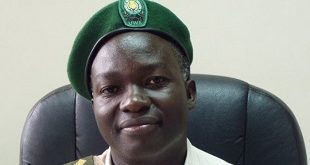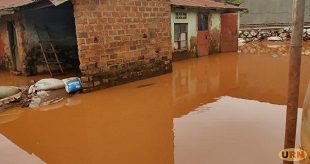
Kampala, Uganda | THE INDEPENDENT | Nuclear technology may soon be deployed to fight the cassava brown streak disease (CSBD) in Uganda. CBSD, caused by the Cassava brown streak virus, is one of the major viruses affecting cassava production in Uganda and other countries in Africa.
The disease that was first reported in East Africa during the 1930s causes up to 70% losses in cassava root yields. While scientists at the National Crop Resources Institute (NaCRRI) have used conventional breeding methods to fight the virus, they are yet to come up with a variety that can withstand the disease.
The National Crops Resources Research Institute (NaCRRI) in Namulonge is now turning to a nuclear-based breeding technique in an effort to find a lasting solution. The researchers are teaming up with the International Atomic Energy Agency and the Food and Agriculture Organization of the United Nations (FAO) to develop cassava varieties that are both resistant to the virus and high yielding.
Because cassava is a vegetatively propagated crop, scientists are finding it difficult to improve it to withstand viruses like the brown streak. Cassava is one of the crops with a narrow genetic base. Such crops are not easy to be improved in terms of creasing yields, fighting viruses, or increasing multiplication.
Scientists hope to use nuclear technology through irradiating cassava tissue to increase the diversity of varieties, including some with new traits. The method is about to yield positive results says Dr. Emmanuel Ogwok, a Senior Research Officer at the NaCRRI of the National Agricultural Research Organisation in Uganda and a lecturer at Lira University.
According to an article published by International Atomic Energy Agency (IAEA), so far, 42 new cassava lines have been developed through this method, and four of them have initially shown some level of resistance to CBSD — the focus now is on developing them further for higher yields.
“Following a series of CBSD attacks in 2004, when the first symptoms were detected, the varieties we were cultivating and using in traditional breeding for further improvement were susceptible to the disease. Now by using nuclear breeding techniques, our farmers may once again see hope in growing cassava plants, which are not affected by CBSD,” said Ogwok.
The IAEA’s support to fight CBSD in Uganda is delivered through the combination of a technical cooperation project and a coordinated research project. The IAEA donates equipment, upgrades laboratory facilities, and provides farmers and scientists with training on the techniques used to develop the new cassava lines.
Ogwok was one of the specialists trained in tissue culture — the cultivation of plant cells, and plant pathogens at the University of Natural Resources and Life Sciences (BOKU) in Vienna. Alongside other Ugandan researchers trained in Ghana and Malaysia in both practical and theoretical applications of mutation breeding, Ogwok learned how to use nuclear techniques to address current and emerging threats to pathogens in plants.
This training is particularly important for cassava as it is a vegetatively propagated crop — a plant that has identical characteristics to its parent varieties and can be replicated using nuclear techniques. “The technique uses tissue from a healthy cassava plant, which is irradiated to spur a genetic mutation. Regenerated plants from the irradiated tissue are selected in repeated rounds of tissue culture for resistance to CBSD, observed by the absence of disease symptoms,” said Kofi Bimpong, a Plant Breeder and Geneticist at the Joint FAO/IAEA Centre of Nuclear Techniques in Food and Agriculture.
“For farmers, or end-users, availability of disease-free cassava will improve the livelihoods for rural communities and contribute to food security,” added Bimpong.
“For farmers, or end-users, availability of disease-free cassava will improve the livelihoods for rural communities and contribute to food security,” added Bimpong.
This is the first IAEA project, which has supported Uganda to learn about and apply the enabling nuclear techniques for higher-yielding and disease-resistant cassava varieties.
“Initial capacity in the country has been built with essential equipment, consumables, and training, giving the NaCRRI a good starting point to improve cassava production,” Varbanova said. “The benefits of the project won’t stop at Uganda’s borders,” she added.
As scientists from Uganda are trained in Ghana and Malaysia, in the future, Ugandan experts will also be able to distribute the knowledge further to experts in neighboring countries.
*****
URN
 The Independent Uganda: You get the Truth we Pay the Price
The Independent Uganda: You get the Truth we Pay the Price



